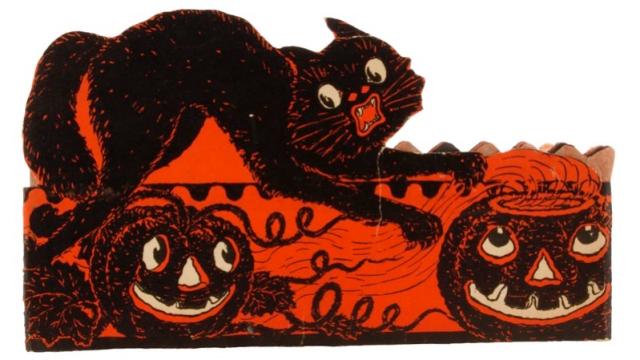If you want to know anything about how people have celebrated Halloween through the decades, Mark B. Ledenbach is the guy to talk to. He’s been an avid collector since he happened upon a treasure trove of spooky antiques back in 1988, and has since amassed what he estimates to be the largest vintage Halloween collection in the world.
He also runs a robust website devoted to all things Halloween, and has written the go-to guide for serious hobbyists, titled Vintage Halloween Collectibles. Though Halloween has its roots stretching back thousands of years — when it was a Celtic end-of-the-harvest festival called Samhain — the traditions we associate with the holiday today have far more recent origins.
“By and large,” he says, “Halloween as a holiday, where adults would have parties for their friends, and would decorate their homes — that didn’t start in the United States until about 1910. Trick-or-treating as a concept, wherein children would go around and knock on people’s doors asking for candy, was much farther in the future. That really didn’t happen until the mid-1930s.”
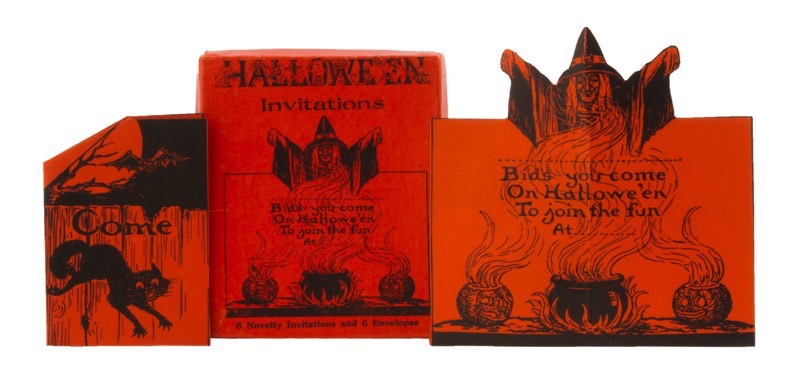
Boxed Set of 6 Novelty Invitations and Envelopes, Beistle, late 1920s, $US560 ($737). Image and caption courtesy of Mark B. Ledenbach.
People in the 1920s celebrated Halloween in a much different manner than what we’re used to today, Ledenbach explains, mainly because they were gatherings attended only by adults, where they would play games like play bridge, whist, canasta, and mah jong. For decorations, party hosts would head to the five-and-dime store and buy everything they needed for the festivities: invitations (like the spooky ones pictured above, which are definitely aimed at a grown-up crowd), decorations, and prizes like candy containers — all very ephemeral items, often made of paper or other flimsy materials. But they could still be extremely creepy, like this eerie fellow:
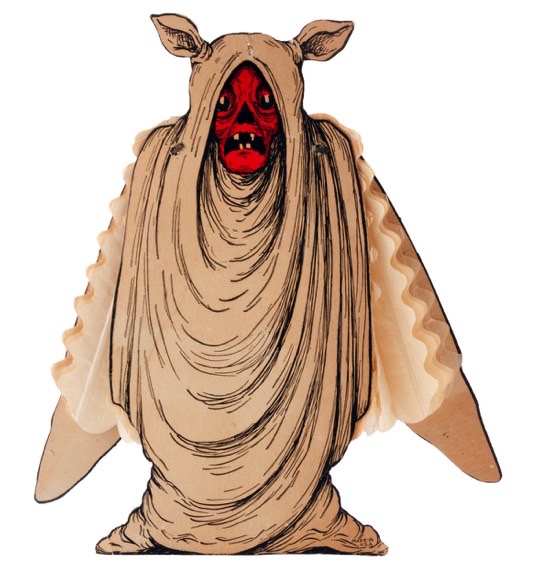
Winged Ghost Table Decoration, Beistle, 1925, $US400 ($526). Image and caption courtesy of Mark B. Ledenbach.
In Ledenbach’s experience, the older the Halloween decoration is, the scarier it ends up being. “Almost all the imagery from that early time, from 1910-1935, the stuff was made primarily for adults, so it was scary, unsettling, and really creative,” he explained. “It wasn’t bloody — it was scary. It was meant to catch your eye and unsettle you, even at a party.”
For instance, there’s something about this grinning devil that makes you not want to stare at it too long:
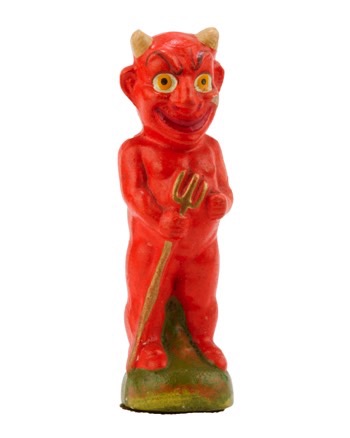
Devil Candy Container, Germany, 1920s, 6.25″ H, $US600 ($790). Image and caption courtesy of Mark B. Ledenbach.
Or this one. Those teeth:
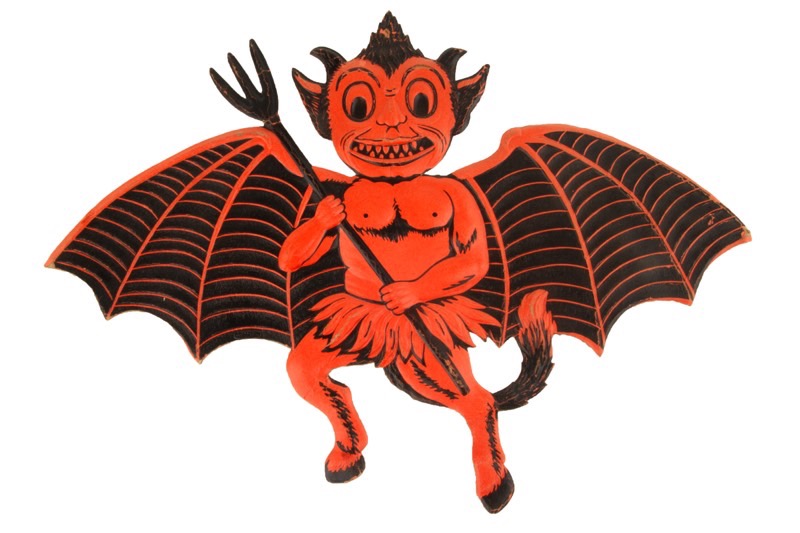
Large Devil Bat Diecut, Germany, 1935, 15.25″ H x 20.25″ W, $US3000 ($3,948)-3500. Image and caption courtesy of Mark B. Ledenbach.
Or, how about this one, which looks ready to steal your soul with its eyes?
Â
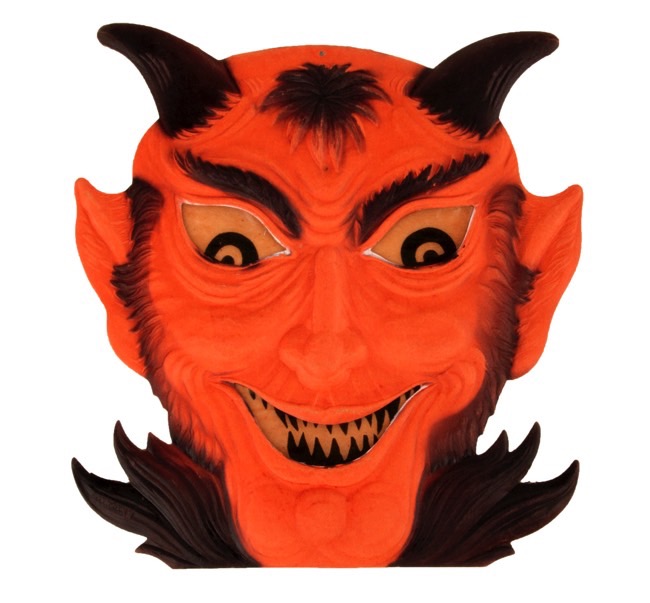
Devil Face Diecut, Germany, 1920-1930s, 10.25″ H x 9.5″ W, $US125 ($164). Image and caption courtesy of Mark B. Ledenbach.
It wasn’t until the ’30s that the concept of “trick-or-treat” took hold, and kids began knocking on neighbour’s doors, asking for candy. “Once Halloween began to be [geared] more toward kids, which happened gradually starting in the early to mid-1930s”¦ the devils and witches and ghosts became very friendly and innocuous,” explained Ledenbach. “Not so much inspiring chills; instead, it was cutesy.”
By the time TV arrived in the 1950s, Halloween had transformed into a holiday primarily for children, and the sophisticated Halloween imagery that Ledenbach collects, like the wonderfully mournful leaf decorating the box of seals depicted below, “decisively ended by about 1955.”
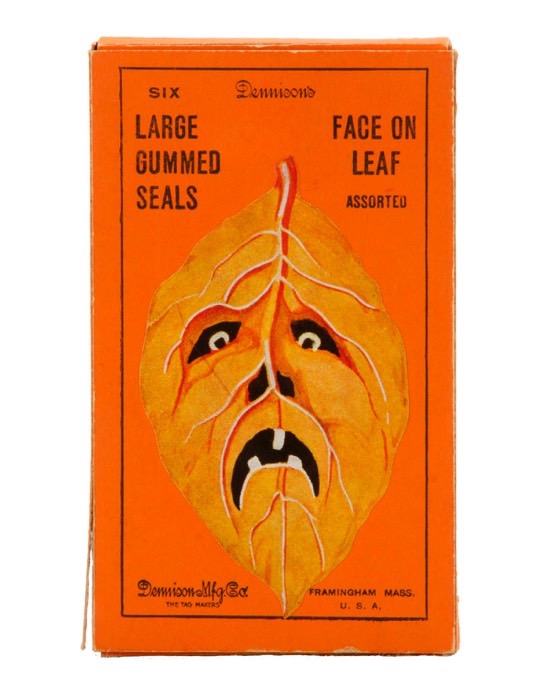
Boxed Set of 6 Assorted Leaf Faces, Dennison, first appeared in their 1924 Bogie Book, $US180 ($237). Image and caption courtesy of Mark B. Ledenbach.
As such, Ledenbach estimates his collection (some of it seen here) contains “something like 5,000 individual pieces collected over 30 years,” and spans mainly from 1910 to 1955 by necessity. “There are pieces that were made prior to 1910, but there are really very few of them,” he says. “[For instance], there were people who would send postcards to their friends wishing them a Happy Halloween.”
Ledenbach is particularly drawn to commercially produced items that were made for those early Halloween parties, which were commonly thrown away after use — unlike Christmas decorations, which tend to get saved. This means that vintage Halloween collectibles in good condition are quite valuable; he recently followed an eBay sale in which someone coughed up $US5,800 ($7,632) for a circa 1935 die-cut decoration of a jack o’ lantern made of cardboard.
“As someone who has arguably the largest collection of vintage Halloween in the world, I’m thrilled with the prices,” says Ledenbach. “But in terms of wanting to buy items that have eluded me all these years, I’m not happy. And at some point, I’m going to want to sell all of this, because you can’t take it with you.”
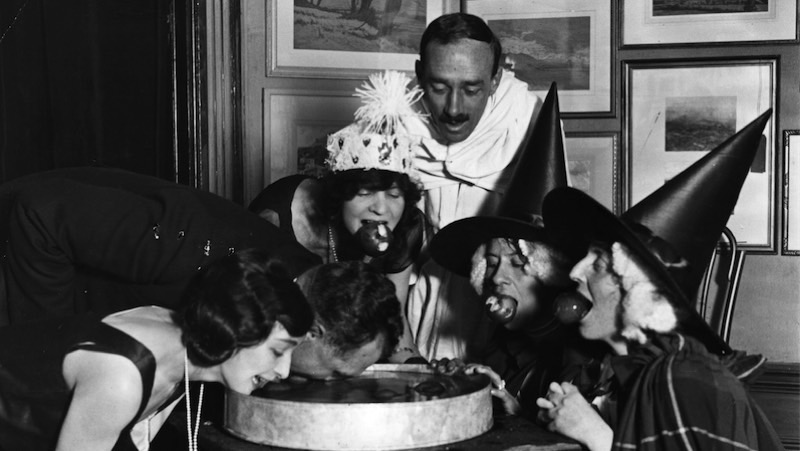
October 1922: An apple bobbing game at a Halloween fancy-dress party. Image: Topical Press Agency/Getty Images
If you want to see more historically spooky items, Ledenbach is the author of Vintage Halloween Collectibles, available here. Check out his blog for an encyclopedic array of information, including tons more collecting tips — plus an entire section devoted to debunking fakes he finds for sale on eBay.
This post was originally published on October 31, 2016.
